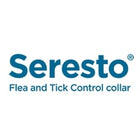
Dogs are often exposed to insects that can bite or sting them, causing discomfort and potential health risks. While some bites are minor and heal on their own, others require immediate attention. Identifying various insect bites and implementing preventive measures is key to maintaining your dog's comfort and health.
Flea Bites on Dogs
Fleas are tiny, dark brown insects that latch onto dogs to feed on their blood. They multiply rapidly and can infest your home if not controlled. Flea bites cause severe itching, leading to excessive scratching and skin irritation. In some dogs, flea saliva triggers flea allergy dermatitis (FAD), resulting in hair loss, red patches, and bacterial infections.
How to Identify Flea Bites:
- Small red spots on the skin
- Frequent scratching and biting
- Presence of flea dirt (tiny black specks on fur)
Prevention & Treatment:
- Use vet-recommended flea prevention products like topical treatments, oral medications, or flea collars.
- Keep your home and pet’s bedding clean.
- Consult a vet if symptoms persist.
Tick Bites on Dogs
Ticks are blood-sucking parasites that cling to dogs, especially in grassy or wooded areas. They may carry tick-borne diseases like Lyme disease and Ehrlichiosis.
How to Identify Tick Bites:
- Red, inflamed circular lesions
- Scabs or crusted skin after removal
- A bullseye rash (potential Lyme disease indicator)
Prevention & Treatment:
- Check your dog daily for ticks, especially on the head, ears, and paws.
- Remove ticks carefully with tweezers or a tick remover to avoid leaving parts embedded in the skin.
- Use year-round flea and tick prevention products recommended by your vet.
Mite Infestations on Dogs
Mites are microscopic parasites that cause mange—a skin disease leading to hair loss, intense itching, and skin infections.
Types of Mange:
- Sarcoptic Mange (Scabies) – Highly contagious, causes extreme itching and skin inflammation.
- Demodectic Mange – Common in puppies or immunocompromised dogs, leading to patchy hair loss.
- Ear Mites – Affect the ears, causing head shaking, dark discharge, and ear inflammation.
Prevention & Treatment:
- Avoid contact with infected animals.
- Use vet-approved flea and mite preventatives like NexGard, Simparica, or Bravecto.
- Seek veterinary care for prescription medications.
Mosquito Bites on Dogs
Mosquito bites cause mild irritation but pose a significant risk as mosquitoes transmit heartworm disease.
How to Identify Mosquito Bites:
- Small red bumps, especially on the ears, belly, and groin
- Itching or mild swelling
Prevention & Treatment:
- Ensure your dog stays protected by administering heartworm prevention medication throughout the year.
- Use pet-safe mosquito repellents before outdoor activities.
- Remove standing water to reduce mosquito breeding.
Bee, Wasp, and Hornet Stings
Stinging insects inject venom, causing painful swelling and, in some cases, severe allergic reactions.
How to Identify Stings:
- Pain, redness and Swelling at the sting site
- Limping if stung on a paw
- Signs of an allergic reaction (facial swelling, difficulty breathing, vomiting)
Prevention & Treatment:
- Apply an ice pack to reduce swelling.
- Call your vet for guidance on antihistamines like Benadryl.
- Seek emergency care if signs of an allergic reaction appear.
Ant Bites on Dogs
Fire ants and other biting ants inject venom that causes pain, redness, and sometimes pus-filled lesions.
How to Identify Ant Bites:
- Small red bumps with white centers
- Swelling and itching
- Possible allergic reaction if multiple bites occur
Prevention & Treatment:
- Avoid areas with visible ant hills.
- Brush ants off quickly if they get onto your dog.
- Apply cold compresses for pain relief.
Biting Flies (Horse Flies, Black Flies, Deer Flies)
Flies can cause painful bites, especially on thin-skinned areas like the ears and belly.
How to Identify Fly Bites:
- Red, raised bumps or welts
- Swelling and irritation
- Some dogs may have an allergic reaction
Prevention & Treatment:
- Use pet-safe insect repellents.
- Keep dogs indoors during peak fly activity.
- Apply ice packs to reduce swelling.
Keeping Your Dog Safe from Insect Bites
Biting and stinging insects can be troublesome for dogs, but proactive prevention helps reduce the risks. Here’s how you can keep your pet safe:
✔️ Use vet-approved flea, tick, and mosquito preventatives year-round.
✔️ Regularly check your dog’s fur and skin for bites, ticks, and fleas.
✔️ Maintain a clean yard and home to reduce insect infestations.
✔️ Contact your veterinarian right away if you observe any symptoms of an allergic reaction.
By staying proactive, you can keep your dog comfortable and safe from harmful insect bites.






